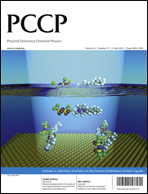The efficiency of small-molecule solar cells critically depends on the match of the junction of the donor and acceptor semiconductors used in these devices to create charged carriers and on the mobility of individual components to transport holes and electrons. In the present study, a 2% efficient bilayer organic solar cell consisting of a p-type semiconductor, pentacene, and an n-type semiconductor, N,N′-diheptyl-3,4,9,10-perylenetetracarboxylic diimide (PTCDI-C7), is fabricated. The morphology of PTCDI-C7 interestingly follows pentacene due to the matched surface energy of these two active layers and the easily deposited PTCDI-C7 monomers on an inclined plane of the pentacene grains. This condition results in the low trap states in the PTCDI-C7 film and at the pentacene/PTCDI-C7 interface for the enhancement of exciton dissociation and carrier transport compared with the photoactive layer comprised of pentacene and N,N-ditridecyl-3,4,9,10-perylenetetracarboxylic diimide (PTCDI-C13). The detailed exciton and carrier transport mechanisms are investigated using time-resolved photoluminescence and X-ray diffraction spectroscopy.

You have access to this article
 Please wait while we load your content...
Something went wrong. Try again?
Please wait while we load your content...
Something went wrong. Try again?


 Please wait while we load your content...
Please wait while we load your content...